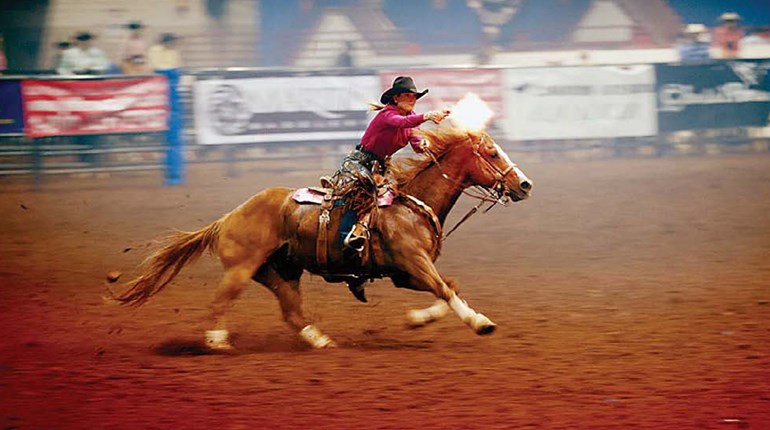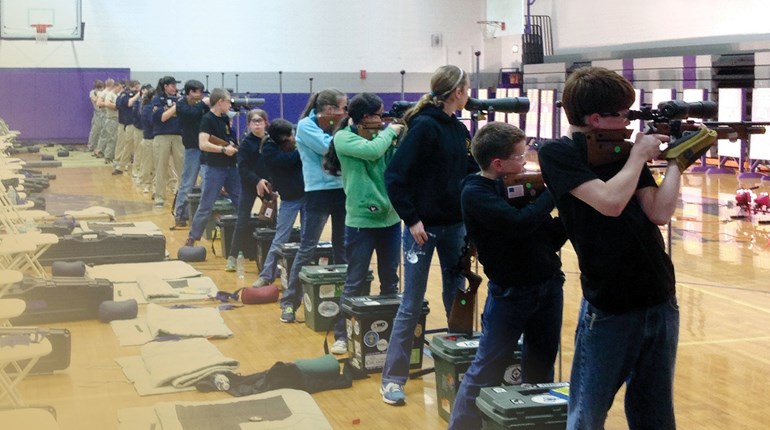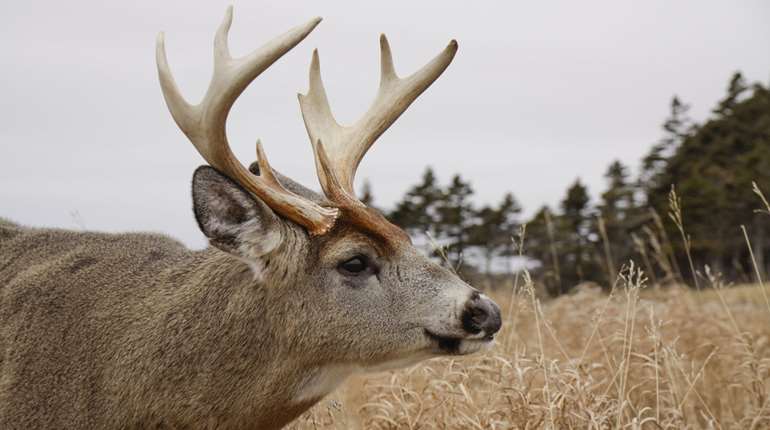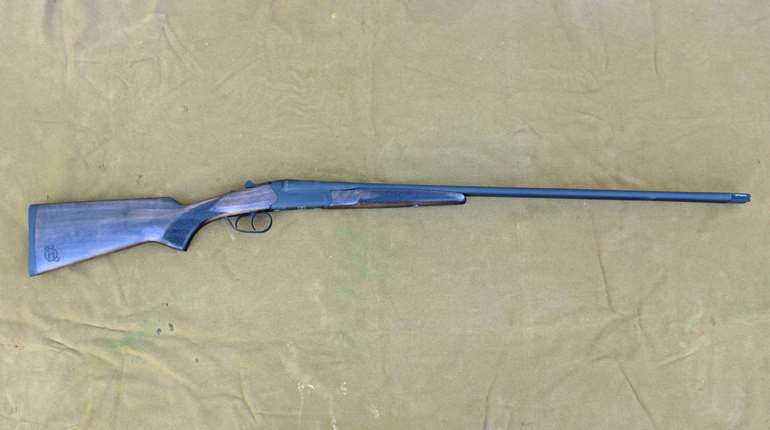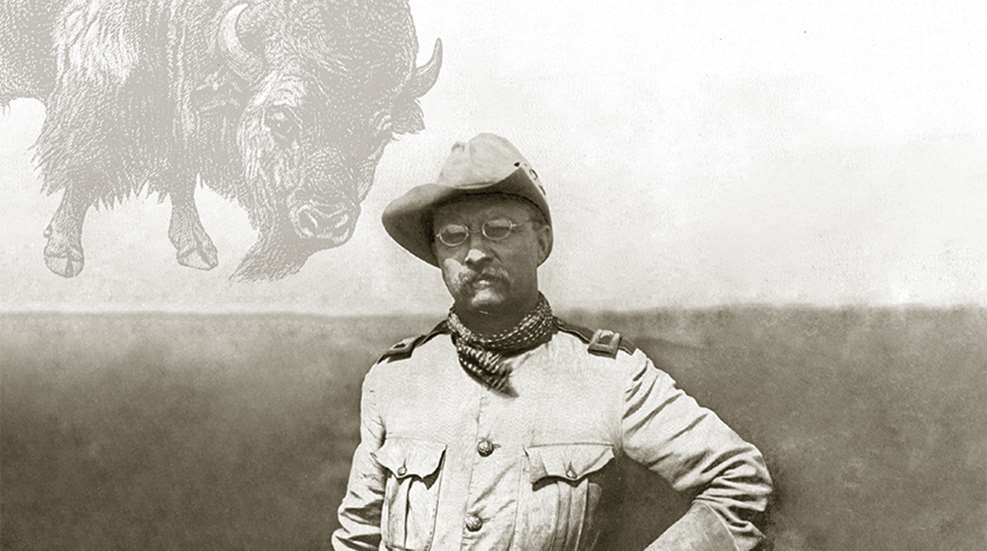
Arriving at 3 o’clock in the morning in a strange town and knocking on the door of an irritable innkeeper and asking for a bed is not how you do a hunting trip—especially if you are from New York City and have just arrived in a remote town in the West.
Yet that’s how, in September 1883, a 24-year-old New Yorker began his first Western hunt. The young man was Theodore Roosevelt, and he looked nothing like someone who could handle a hunt in the rugged terrain near what is now Medora, N.D. Bespectacled, svelte and looking rather studious (after all, he had been educated at Harvard), he received chuckles from the hardy locals when he announced he wanted to hunt bison. The man didn’t look like he had the stamina to stalk a limping tortoise, never mind chase the American buffalo in the Dakota badlands.
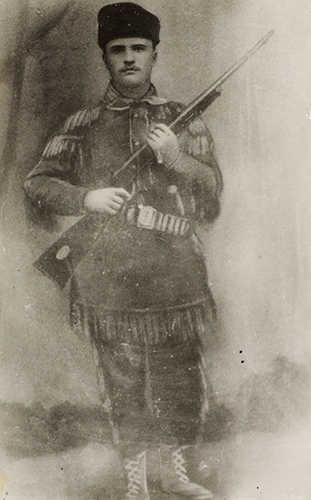
Despite that awkward debut into Western hunting, Theodore Roosevelt became one of America’s most acclaimed hunters. In fact, he was the most accomplished outdoorsman ever to occupy the White House.
This January, we commemorated the 100th anniversary of his death. He was only 60 years old when he died on Jan. 6, 1919. Yet, just as his death came early, so had come his presidency. He had been the youngest person to become president—at age 42. It’s a record that still stands. (Despite popular belief, John Kennedy was not the youngest president. Kennedy was the youngest to win a presidential election, whereas Roosevelt actually became president at a younger age due to the assassination of William McKinley, when Roosevelt was the vice president.)
Intermittently basing himself on the banks of the Little Missouri River in North Dakota in the years 1883 to 1887, Roosevelt hunted extensively in the West. He also became a cattle rancher, owning several thousand head of cattle, and earnestly adopting the strenuous life of a cowboy. This ranching and hunting life transformed him from a New York dude into a rugged man. He always acknowledged that it was his time in the American West that was the most influential factor in preparing him for the presidency: “If it had not been for what I learned during those years that I spent here in North Dakota, I never in the world would have been president of the United States.”
And that learning began with the hunt of September 1883.
Ignoring the sneering reactions from the locals (some called him “four-eyes” since he wore spectacles), he convinced a local guide to take him hunting. The hunt began about 50 miles south of Medora, N.D., on the banks of the Little Missouri. His quarry, the bison, was then on the verge of extinction as millions had been killed in the 1870s due to uncontrolled hunting, and Roosevelt knew this was his first and probably last chance.
The hunt was fraught with trouble from the beginning. The hammer broke on his .45-caliber Sharps rifle, but he found a local man who lent him the hammer from another Sharps. Though he generally favored Winchesters, he wrote that the Sharps “are excellent for very long range work, being good for half a mile and over” when in the right hands, though his own shots would be far shorter, mainly due to his poor eyesight. Still, he complained his own .45-120 Sharps “had a vicious recoil” and “was very clumsy.”
The first day was rainy, and his guide suggested they wait until the rain stopped, but Roosevelt insisted they go, and off they went searching for bison. They came across a blacktail deer. Within 200 yards, Roosevelt fired, but missed. As the deer cantered away, his guide took aim and fired—and dropped the running deer. Roosevelt threw his gun on the ground in envy, saying “By Godfrey, I’d give anything in the world if I could shoot like that!”
The rain continued for a week, yet Roosevelt and his guide set out in the mornings, but got nothing. The weather finally cleared and they ventured further afield in the Dakota badlands. They found a bison bull, stalked him for miles amid the coulees and buttes, but it managed to elude them.
Later they spotted three bison, and in approaching them Roosevelt said “we had to lie flat on our bodies and wriggle like snakes; and while doing this I blundered into a bed of cactus, and filled my hands with the spines.” At 100-150 yards, he fired his rifle. “It was the first time I ever shot at buffalo, and, confused by the bulk and shaggy hair of the beast, I aimed too far back at one that was standing nearly broadside on towards me.” Though hit, the bison ran off.
Roosevelt and his guide jumped on their horses and followed the wounded bison some 8 miles. As the sun dipped below the horizon, unfazed by the fading light, Roosevelt ran his horse to within 20 feet—yes, 20 feet!—of the wounded buffalo and shot again, “but the darkness, and especially the violent, labored motion of my pony, made me miss,” he wrote.
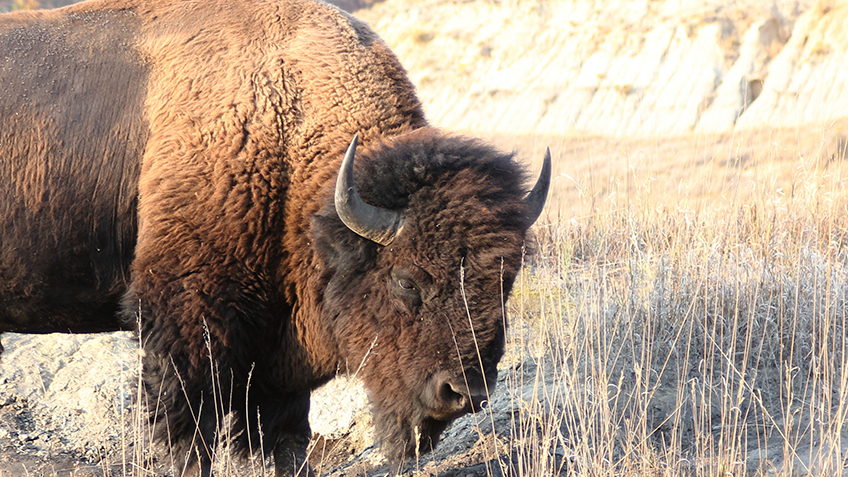
The bull then wheeled around and charged him, and his pony spun quickly out of the way, and in the process the pony’s head hit the rifle, which in turn hit Roosevelt’s forehead, giving him a gash. Blood poured into his eyes. The bull, having missed Roosevelt, charged his guide instead, but the guide escaped unharmed. Nevertheless, Roosevelt ran after the bull on foot, but the bull got away.
That evening, finding no tree or even a bush to tie their horses to in the barren badlands, they tied them to their saddles, put the saddles on the ground, using them as pillows, and went to sleep. They were jolted out of their sleep later that night—the horses were darting off, the saddles being dragged behind them. Suspecting that Indian horse-thieves had scared off the horses, they quickly took to their rifles. False alarm. In the moonlight, they made out the intruder—a wolf that had briefly ambled near their campsite. The threat gone, they began tracking the horses in the moonlight, following the drag marks of the saddles. Luckily, they found the horses unharmed.
As if that wasn’t enough, at dawn they found themselves sleeping in blankets drenched by a steady rain. His guide, who had only reluctantly agreed to the hunt in the first place, was increasingly frustrated with the rainy misadventure. But Roosevelt was unfazed. “By Godfrey, but this is fun!” said Roosevelt.
That morning while it was still raining, they saw another group of bison. Roosevelt crept on his hands and knees on the muddy soil until he was within a hundred yards of one bison cow. He described what happened next. “I now made one of those misses which a man to his dying day always looks back upon with wonder and regret. The rain was beating in my eyes, and the drops stood out in the sights of the rifle so that I could hardly draw a bead; and I either overshot or else at the last moment must have given a nervous jerk and pulled the rifle clear off the mark. At any rate I missed clean.”
His bad luck finally changed on the 10th day. First, the weather cleared. Then, crossing into Montana Territory (neither North Dakota nor Montana was a state at the time), they were riding along some buttes when both horses raised their heads and snuffed the air, a sign they were smelling something. Roosevelt got off his pony, and he walked only a short distance before he noticed a bison’s hoof prints. Moments later, he saw the animal itself, a mere 50 yards away. It was a magnificent bull: “His glossy fall coat was in fine trim, and shone in the rays of the sun; while his pride of bearing showed him to be in the lusty vigor of his prime.”
His guide pointed to a spot behind the shoulder—and Roosevelt’s shot connected. The bull began to run, and he put two more shots into the beast as it lumbered up a ridge and disappeared. Soon they found him down, “stark dead.” Roosevelt could hardly contain his excitement, and he pranced around the animal, imitating an Indian war dance—much to the amused disbelief of his guide.
Roosevelt and his guide savored the meat. He wrote, “the flesh of this bull tasted uncommonly good to us, for we had been without fresh meat for a week.” They later shared the meat with a local ranching family as well.
The bison was the largest animal in America and was an accessible big-game trophy, especially to hunters from the East, if they were willing to travel west. By the 1870s, bison hunting was all the rage, and the animal was being devastated by hunters descending on the West from everywhere. The major culprit, however, was uncontrolled commercial hunting (for its skin, tongue, etc.). The government essentially winked at the carnage, since many officials thought that wiping out the bison would convince Native Americans, given their historic subsistence on the animal, to relent fighting and submit themselves to life in reservations.
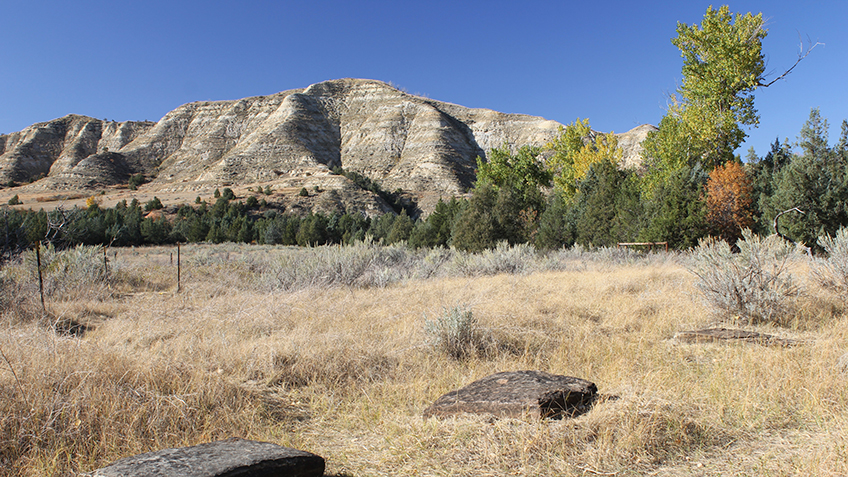
We can debate whether his hunt for bison at a time when they were near extinction made Roosevelt himself complicit in their plight, but such debates are exercises in futility because we did not live in that world. In fact, it is just as arrogant for us to make armchair judgments of Roosevelt’s time as it would be for a future generation 140 years from now to make such of our time.
Nevertheless, certain facts remain. Before the westward settlement of America, an estimated 20 million to 60 million bison roamed free. But by the late 1800s, they were nearly extirpated; an 1889 estimate put the total number at less than 1,100 in all of North America. Of those, less than 100 were left in the wild in the U.S., the rest in protected herds, private herds, and zoos in Canada and the U.S.
Fortunately, thanks to intense conservation efforts, some initiated by Roosevelt himself after becoming president in 1901, today the North American bison population numbers about 400,000—still a fraction of their former number. Of those, only about 30,000 are wild; the rest are in private herds, many of which have been hybridized with cattle at some point in the past. The largest wild bison herd on public land lives in Yellowstone National Park, where 4,500 bison roam our first national park.
In any case, the head of the bison bull from that historic 1883 hunt is preserved today at the Roosevelt home (Sagamore Hill) in Oyster Bay, N.Y., on Long Island.
The base for many of his Western hunts was a ranch called the “Elkhorn,” situated on the banks of the Little Missouri, about 35 miles north of Medora, N.D. There is now nothing remaining of the ranch house, except the foundation stones. Nevertheless, the place is still a placid spot, with the same cool breezes that Roosevelt enjoyed when he lived there.
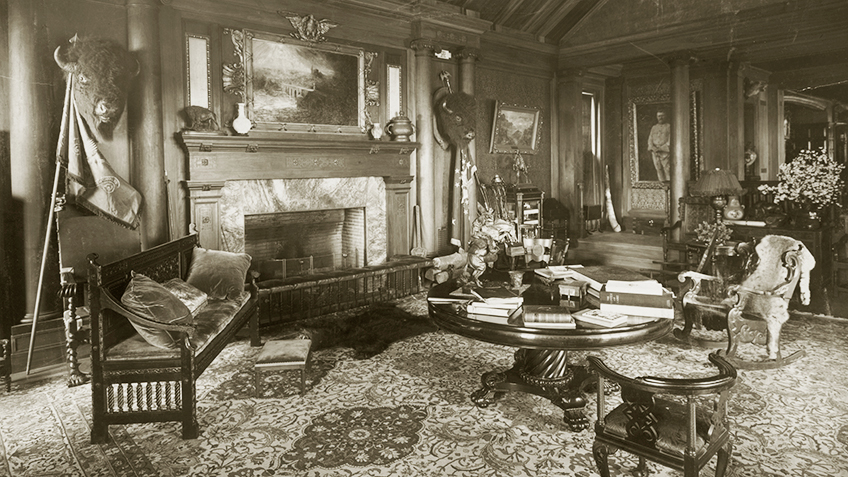
The ranch site and 70,000 acres of the surrounding area now comprise the Theodore Roosevelt National Park—the only national park named after a president. It’s a fully deserved honor, considering that he did more for conservation than any president before or since. During his presidency (1901–1909), he aggressively implemented conservation measures, ranging from protecting the Grand Canyon to establishing what became the national wildlife refuge system. In total, he put some 230 million acres of land under federal protection. He vociferously advocated for the right balance between hunting and conservation. Having lived in the wilderness, he knew firsthand the necessity of having to chase and shoot his dinner; hence the responsibility of making sure there was something left to chase and shoot.
Roosevelt was a Republican, but this is an inconvenient truth today, given our biased media and revisionist education system, and therefore is hardly mentioned. Thus, many Americans are unaware of the Republican Party’s legacy of conservation. Moreover, in recent decades many Republican office-holders have allowed themselves to be sidelined on conservation issues, thus facilitating the myth that Republicans don’t care about the environment.
Roosevelt would be turning in his grave if he saw this state of affairs.













